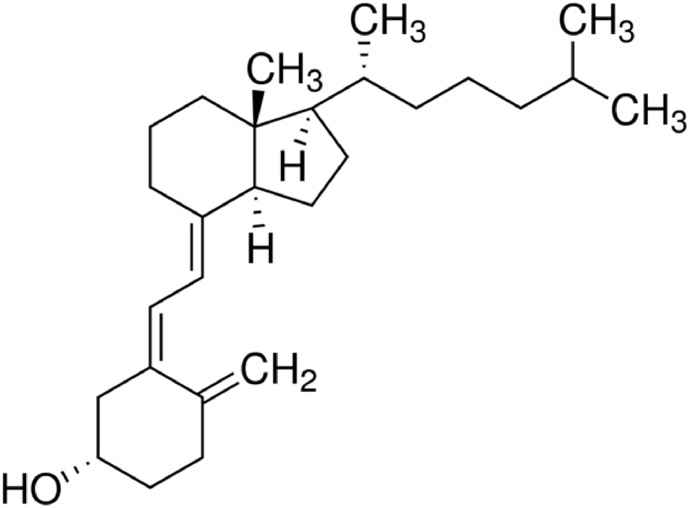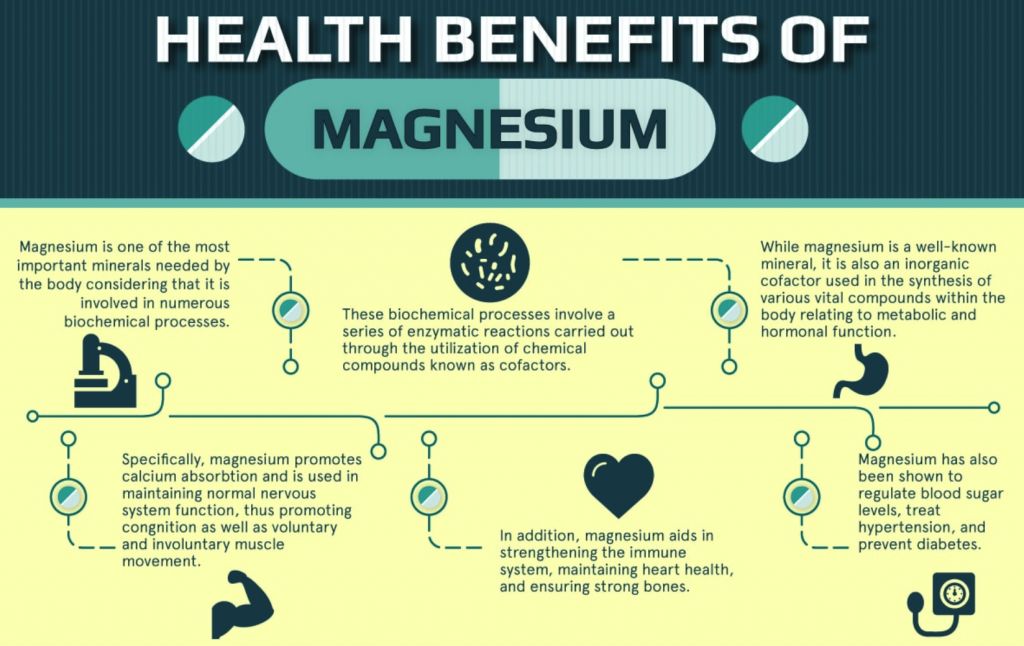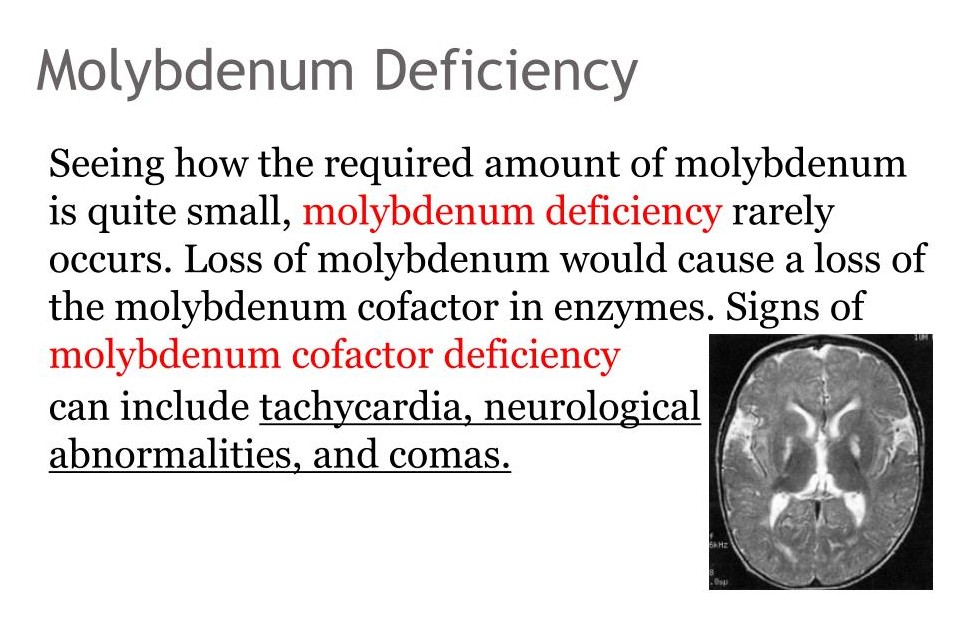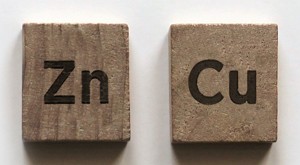

ne of the principle obstacles that we encounter in our work are
"low grade" or subclinical nutritional deficiencies -- specifically, vitamins, minerals, amino acids, EFA's, etc.
It sounds innocuous, but the effects of these subclinical conditions
devastate a large percentage of people. What's worse is that the orthodox medical establishment is completely
obtuse if not negligently ignorant (some might say criminally so) of its existence. What makes this unusual is
that
most diseases
are caused by nutritional deficiency.
1 The proof of this ignorance is that as orthodox and
mainstream a source as Wikipedia brands
orthomolecular medicine, which incorporates
many of the ideas I'm going to talk about, as quackery.
2

In other words, what we're discussing are
deficiencies that do not rise to the level of the disease most commonly associated with a particular deficiency,
but bad enough to contribute to many other disease conditions.
3 For example,
every medical student is taught the results of
extreme deficiency of essential nutrients:
with Vitamin C, it's scurvy; Vitamin D, rickets; Vitamin B1, beriberi; Vitamin B3, pellagra; etc.
But these are only
the results of the most extreme deficiencies in these nutrients.

In 2004, I discussed the horrific effects of even mild
deficiency of Vitamin C -- something that Dr.Linus Pauling, winner of the Nobel Prize for Medicine, called
hypoascorbemia. I cover this extensively in
Chapter 4 of
Meditopia. I now understand that "hypocholecalciferia" -- if you will -- is every bit as dangerous. Moreover, the degree to which
this phenomenon is underappreciated can be found when one realizes that the RDA (U.S. Recommended Daily Allowance)
for Vitamin D is 400 to 800 IU, but the "optimal dose" is closer to 30,000 IU, or roughly 50 times higher,
and that there are people who have taken 3,000,000 IU per day for extended periods without ill-effect,
which is 5,000 times higher! The absurdity of the official numbers are accentuated when you realize that
the human body can product about 20,000 IU on its own, if you stay out in the sun for 30 minutes with most
of your skin exposed. (By the way, it is important at this stage that you clearly understand the difference
between the different forms of Vitamin D. There are five different types. For the rest of this page, when
I refer to Vitamin D, I'm referring to Vitamin D3, the preferred therapeutic form.)
4

Are you beginning to grasp the absurdity of it all yet?
Maybe, just a little? If we extrapolate from these basic facts, it means that the official position of
medical and nutrition community is that it is very dangerous to your health to spend even more than one minute
per day outside, exposed to the sun. That's right. Totally ludicrous? Are authorities ever embarrassed that they put these numbers out there?
Of course not. How many health authorities will tell you with a straight face that "the mask" will protect you from
CoVid, when the evidence is overwhelming that chronic mask use is dangerous to your health?
5
Would it be even 1%? I doubt it.
Why AO Essential 1?
Because Critical D3 Co-Factors
& Proper Dosing Have Been Neglected

Books on the subject of recent D3 findings have been gaining
in popularity over the past 10 years. If you look go to Amazon.com and type in Vitamin D3 in the
search bar (first choose "Books" as your category),
you get over 370 titles, and the majority
of these focus on recent findings. Strangely, there is a disconnect between the products that
vitamin manufacturers are making and selling, and the optimal formulations that the scientific literature
clearly dictates that they
should be making.
(Some prominent titles are provided in the right column.)

Here's a good example:

The market is awash with Vitamin D3 supplements (often with K2, which
is the first co-factor I discuss below) in the 1,000 to 5,000 IU value range. The scientific literature strongly suggests that
the optimal dosage is anywhere from 25,000 IU daily
(the dosage that Vitamin D3 researcher and author,
Jeff Bowles, openly admits he's been taking for years), to
let us say, 30,000 IU daily
(the dosage that Dr. Somerville has been recommending to all his patients for years, based on his own
extensive research and experience, both personal and professional.).

This begs the question, "Why the lower dosages?" And the answer is that it is more profitable.
Now, of course, the argument could be made, "Just take five 5,000 IU caps to get to the 25,000 IU, or ten 5,000 IU caps to get to 50,000 IU."
But why would you do that when you could load up a small #1 capsule with 200 mg. of Vitamin C (500,000 IU per gram variety), yielding 100,000 IU,
and still have room left over for a full gram of Vitamin K2/MK7?

It doesn't make any sense.

But even this institutionalized "low dosing" on the part of vitamin manufacturers doesn't
address the larger issue of co-factor exclusion to the detriment of the consumer. (We include, in this formula, what the literature shows
are the most critical co-factors -- but we respect that
others have different opinions as to the most
necessary Vitamin D co-factors.)

Orthodoxists claim that
"high dosing" with Vitamin D
can be potentially dangerous -- a claim that helped produce the laughably low "official figures" in the first place. The vast majority
of medical doctors in the world, trusting what they are taught in medical school -- maybe I should say "not taught,"
are fully onboard with this false narrative. What they failed to
add is that this danger can be removed by adding co-factors. Why is this important? Because Vitamin D3 "high dosing" -- or perhaps I should
say, "proper dosing" -- produces deficiencies in certain essential co-factors, in the absence of an optimal diet.
Nutritional expert, Dr. Carolyn Dean, M.D., N.D., echoing the
advice of the
Vitamin D Council, specifies four:
magnesium, zinc, Vitamin K2, boron, and
"a tiny amount of Vitamin A". (All of these are included in AO Essentials One, except for Vitamin A, which you can easily get in
optimal amounts from
carrots, greens, milk, and a variety of other
foods.) We also add selenium (which most people are also deficient in), molybdenum, and copper (the latter to balance out the zinc).
How CoVid Unintentionally Brought
Attention To These Chronic Deficiencies

From February 2, 2020 until February 2, 2021 -- precisely one year --
I maintained a daily CoVid blog, which attempted to get to the bottom of this
global, world-changing phenomenon.
Out of that evolution of thought and discovery came supplemental recommendations based on the clinical observation that most
CoVid patients were deficient in Vitamin D, zinc, and magnesium -- some quite severely in one or more of these nutrients.
These observations worked their way into an
advisory page I wrote, called
Coronavirus: Essential Self-Defense Against Infection.

Well before CoVid entered the popular lexicon, the relationship between Vitamin D
and its best-known co-factors, zinc, magnesium, and boron, were already well-established. The orthodox community had, for many
years, advised against taking "too much Vitamin D to avoid its toxicity." With time it was discovered that high dose Vitamin D,
taken therapeutically, could cause a depletion of magnesium and zinc to dangerous levels.
It wasn't the Vitamin D itself that
was toxic. Whether by accident, ignorance, or malicious intent, orthodox chose to confuse cause and effect.
The problem was the depletion of critically important magnesium and zinc,
minerals for which the human body increases drawdown when Vitamin D intake is increased to "optimal therapeutic levels"
OR which often accompanies states of Vitamin D deficiency itself.

Jeff Bowles, after reviewing 52,000 scientific studies on Vitamin D, a project that
consumed many years, came to the conclusion that NOBODY should sell high dose Vitamin D without K2. Out of this stern
advisement came the massive coupling of these two vitamin supplements on vitamin shelves. But I will go one step farther:
I have come to believe that it isn't smart to take Vitamin D3/K2 without adding zinc, magnesium, and boron -- at a minimum.
Again, this matches the advise of the
Vitamin D Council.
6

With these nutrient interdependencies in mind, let's review the Vitamin D co-factors that
are included in
AO Essentials 1.

Vitamin K was discovered in 1929, and there are two forms:
K1 (phylloquinone) and K2 (menaquinone) -- the former is found in plant foods like leafy greens, the latter,
in animal and fermented foods, and has been established as being a superior form.
7
If Vitamin D3 high dose supplementation is adopted without an adequate
amount of Vitamin K in the diet, then the bone building and strengthening attributes of D3 can be
redirected to calcification of blood vessels and kidneys. The solution is easy, but it is still a solution
that must be employed. This is especially true since so many people are lacking in it.
Fully 97% of a sample of
otherwise healthy subjects were found to be deficient in Vitamin K2 in a recent study. However, the distribution of this deficiency
favors the elderly.
8

Vitamin K2 in critical to blood clotting, heart health. bone health,
cavity prevention, and the optimization of Vitamin D3 -- a fact now so well-known that it explains why D3 and K2
are so frequently coupled by vitamin manufacturers.

Zinc is a critical nutrient largely disregarded by modern medicine.
Although zinc discovery and use goes back at least into Greek antiquity,
nutritional zinc deficiency in humans wasn't discovered or recognized until 1961 -- long
after its importance to plants and other animals was firmly established.
9
Your author and half of Alpha Omega's customers are older than that!

In my
March, 2020 CoVid Blog,
I reported that an astonishing correlation was found between the symptoms of CoVid and those of zinc deficiency -- the latter
having been well-established.
10

Strangely, Jeff Bowles has also uncovered countless examples and obscure studies showing
a correlation between higher dosing of Vitamin D and zinc, as well as our next nutrient, magnesium. If you do a search online for this
information, you find that it has largely been censored.

For all our of 30+ yeaer history, Alpha Omega Labs has never pushed
magnesium supplementation -- largely because its nutritional properties AND its abundance in certain
foods has been well-established.
11 Magnesium deficiency is all too often the
result of poor diet.
 (Click to enlarge)
(Click to enlarge)

As in the case of zinc and other essential minerals,
the symptoms of magnesium deficiency is well-established.
12
However,
you shouldn't "skip on magnesium"
if you're supplementing with Vitamin D. Nor do we believe that magnesium supplementation should be used as a excuse
to skip on magnesium-heavy foods in the general diet. There ARE indigenous groups who have personal diets with as much
as 3,000 mg. per day.

Selenium is an essential nutrient whose benefits didn't begin to be recognized until 1957.
The "official" recommended daily allowance is only from
20
to 70 micrograms (per day) are required, however,
its benefits are even
recognized by orthodoxy.
13
It is included in
AO Essentials 1 not because it is a Vitamin D co-factor -- it's not --
but because many people are
deficient in selenium, as well. We include just a small amount to prevent insufficiency because selenium has a narrower
range of optimal intake than many other minerals.

For years Dr. Joel Wallach wrote books and gave interviews about how miraculous
selenium works in treating cardiomyopathy.
14 But he stated in his other written works that selenium
helps with dozens of other health conditions. Additionally, I worked with the late Dr. Neville Solomon in Guayaquil for several years
before his untimely death in 2011. In his own clinical work, Neville found that VERY few cancer patients did not respond well to
selenium supplementation, not because selenium is a cancer cure, but because so many people are deficient.

Boron is an essential nutrient for which, quite paradoxically, the USDA and other
authorities have NOT established a recommended daily allowance. This is strange, because they have no problems establishing
its upper safety limit --
(see chart below).
15.

Over the years, I've encountered many studies and anecdotal reports, both,
where people derived tremendous benefit from taking borax (sodium borate).
Normally people associate borax with laundry detergent, but it is an important Vitamin D co-factor, and as stated above, a essential mineral
in its own right.

Years ago, I worked with a botanist who told me, "There are 16 essential minerals that plants need to survive.
Everyone knows about NPK (nitrogen, phosphorus, and potassium), but little is said about the other 13. When you get down to the last two -- boron and molybdenum --
which plants only need in micrograms, you find that they are completely unappreciated. Maybe because despite how critical they are, plants need so very little.
Some day, they'll discover that humans have the same relationship with them."


Molybdenum is not added to the formula as a co-factor. It is added, because many of the bone disease
and neurological complaints we get suggest possible deficiency. Because testing for molybdenum is rare, it is indeterminable at this point,
from an epidemiological perspective, whether or not molybenum deficiency is a broader problem. I do find it intereseting, speaking as a grower,
that molybdenum deficiency has become a much more popular topic of discussion in the plant world.


Copper is another essential mineral that is often coupled with
zinc supplementation, in order to balance the formula. The reason has been well-established: just as
Vitamin D creates demands for magnesium and zinc on the body, so zinc supplementation, in turn, induces
drawdown on copper.
We do not recommend any copper supplementation -- ever -- in the absence of added zinc.
However, since zinc blocks copper absorption, add roughly 2% (1:50 ratio) cooper-to-zinc is well supported
in the nutraceutical literature.
Footnotes
- Nutritional Deficiency Causes Most Disease --
Principia Scientific
- See also:
Orthomolecular.org: Therapeutic Nutrition Based Upon Biochemical
Individuality.
- See: 341 Nutrient Deficiency or Disease.
- See: Different Types of Vitamin D You Didn't Know Existed:
Know about the five types of Vitamin D and their significance. The following article, from the Male Testosterone Booster site, also discusses the
differences in detail, along with a recommendable explanation of the sunshine hormone itself,
"Types of Vitamin D Explained – In Detail.
Also: Forms and structure of vitamin D.
The following study is among many explain why Vitamin D3 is preferred over D2:
Effects of High-Dose Vitamin D2 Versus D3 on Total and Free 25-Hydroxyvitamin D and Markers of Calcium Balance.
 For a good overview of Vitamin D
deficiency: Understanding vitamin D deficiency. Note, the statement
that 1 billion people are "Vitamin D deficient" is -- based on my extensive research -- extremely understated, although many have
categorized its causes.
This may account for the grossest signs
of Vitamin D deficiency, but it does not account for chronic, subclinical levels of deficiency.
For a good overview of Vitamin D
deficiency: Understanding vitamin D deficiency. Note, the statement
that 1 billion people are "Vitamin D deficient" is -- based on my extensive research -- extremely understated, although many have
categorized its causes.
This may account for the grossest signs
of Vitamin D deficiency, but it does not account for chronic, subclinical levels of deficiency.
 Interestingly,
orthodox
sources immediately began attacking those who were treating CoVid with high dose Vitamin D after Vitamin D deficiency began being recognized as
a by-product of CoVid. In fact, promulgating the
dangers of "Vitamin D toxicity
(called hypervitaminosis D)" has become a major "official narrative meme" since early 2020, when CoVid emerged.
Interestingly,
orthodox
sources immediately began attacking those who were treating CoVid with high dose Vitamin D after Vitamin D deficiency began being recognized as
a by-product of CoVid. In fact, promulgating the
dangers of "Vitamin D toxicity
(called hypervitaminosis D)" has become a major "official narrative meme" since early 2020, when CoVid emerged.
- I could write multiple essays on how hyper-ridiculous the CoVid mask wearing is, but for the moment, this should
suffice:
Twenty Reasons Mandatory Face Masks Are Unsafe, Ineffective, and Immoral. See also:
Real life study: Masked schoolchildren are harmed physically, psychologically, behaviorally and suffer from 24 distinct health issues.
- This is referring back to the previous advisory
by Dr. Carolyn Dean, M.D.
- See: Vitamin K-containing dietary supplements: comparison of synthetic
vitamin K1 and natto-derived menaquinone-7 -- (PubMed). Healthline also puts out a good article, stated in layman's terms:
Vitamin K2: Everything You Need to Know.
- See:
Who's at highest risk for vitamin K2
deficiency?. Short answer: the very young and those over 40.
- See: Zinc has been known for a long time. The ancient Greeks knew of it and called it
pseudargyras (false silver). See
history of zinc. For an overview of its nutritional importance, see
Zinc and its importance for human health: An integrative review.
It is ironic that "zinc essentiality was established in 1869 for plants, in 1934 for experimental animals and in 1961 for humans." Yet another example of how
unimportant humans are to the non-human elite of this world.
 As an aside, it is important to
know the amount of elemental zinc in your zinc supplement, because they vary. The most common used for supplements include:
zinc gluconate, acetate, sulfate, picolinate, orotate, and citrate.
As an aside, it is important to
know the amount of elemental zinc in your zinc supplement, because they vary. The most common used for supplements include:
zinc gluconate, acetate, sulfate, picolinate, orotate, and citrate.
- See: An Overview of Zinc Deficiency by
Benjamin F. Asher, M.D.
- See: Magnesium article by
National Institutes of Health. Also: Magnesium (Pub Med)
- See: 65 medical conditions associated with magnesium
deficiency.
- See also: 10 Selenium Benefits + Sources, Dosage & Toxicity
- See: Damon Davis Interview with Dr Joel Wallach Part 3, searching
for "selenium". Dr. Joel has specific selenium use recommendations for allergies, Alzheimer's, anemia, arrhythmia, arteriosclerosis, arthritis, autoimmune diseases ---
and those are just the ones that begin with the letter "a." I became so enamored with Dr. Wallach's work, that I created a personal
reference page with dietary recommendations, abstracted from his work.
- See: 13 Amazing Benefits of Boron,
The Physiological Role of Boron on Health, and
WebMd Boron Overview (since even a broken watch tells the correct time
twice a day).
 Almost 10 years ago, Walter Last posted an article, entitled,
The Borax Conspiracy:
Big Pharma's Latest Ploy to Outlaw a Natural Cure for Arthritis, Osteoporosis and Tooth Decay -- with the original post having
been made on health-science-spirit.com with the title, How the Arthritis Cure has been Stopped.
Interestingly, borax is illegal for use as a food additive, in the U.S., China, Thailand,
and other countries.
Almost 10 years ago, Walter Last posted an article, entitled,
The Borax Conspiracy:
Big Pharma's Latest Ploy to Outlaw a Natural Cure for Arthritis, Osteoporosis and Tooth Decay -- with the original post having
been made on health-science-spirit.com with the title, How the Arthritis Cure has been Stopped.
Interestingly, borax is illegal for use as a food additive, in the U.S., China, Thailand,
and other countries.
- See: Health benefits and risks of copper,
Supplementing With Zinc and Copper:
A Balancing Act (has excellent links to clinical studies), Copper deficiency.